Principle #4: The Polar Regions have productive food webs.
4A: Productivity (generation of life) is tied to seasonal changes in terrestrial and sea ice cover, water and air temperature.
4B: Sea ice cover, water and air temperature change with the seasons.
- 4B-1: Phytoplankton, tiny plants at the base of the food web, grow abundantly during the long days of polar summer. Krill (small shrimp-like crustaceans) feed on plankton.
- 4B-2: Each winter, as sunlight and temperatures decrease, sea ice grows to cover large areas of ocean. Young krill survive their first winter by feeding on algae on the underside of the sea ice and the ice provides shelter from predators.
- 4B-3: Krill serve as food for the higher levels in the Polar food webs.
4C: The Antarctic food web is simple and dependent on ice.
- 4C-1: Antarctica is home to marine mammals (whales and seals) and sea birds, including penguins. Antarctica is not home to terrestrial mammals. Polar bears do not live in Antarctica.
- 4C-2: Many Antarctic species (krill, penguins) are dependent on ice cover to survive; they serve major roles in the Antarctic marine food web.
- 4C-3: There is a simple terrestrial food web that exists in regions of the Antarctic, but it is not directly connected to the marine food web.
4D: The Arctic has a more complex food web.
- 4D-1: The Arctic has many terrestrial mammals including musk ox, reindeer, caribou, fox, hare, lemmings, bears, birds and terrestrial plants and trees, etc.
- 4D-2: The Arctic also has a marine food web that does interact with the terrestrial food web, with some animals like polar bears in both food webs. Penguins do not live in the Arctic.
4E: Marine and terrestrial predators are predictors (indicators) of change in food webs.
Effects from climate change are causing disruptions in ecosystems. Predator displacement or food selection changes are resulting in systemic changes in Polar food webs. Examples include: in some regions, polar bears are feeding on geese; bird migration changes; fish populations are changing.
Scientist Spotlight
Related Resources
- Polar Data Stories – Interactive online actives featuring cool Polar research and data.
- I.D. Antarctica – Photographic mysteries of Antarctic animals for students to investigate.
- Project Swarm – A curriculum of lessons and data activities for middle and high school students featuring the influences of warming on the food web interactions between phytoplankton, krill and penguins


